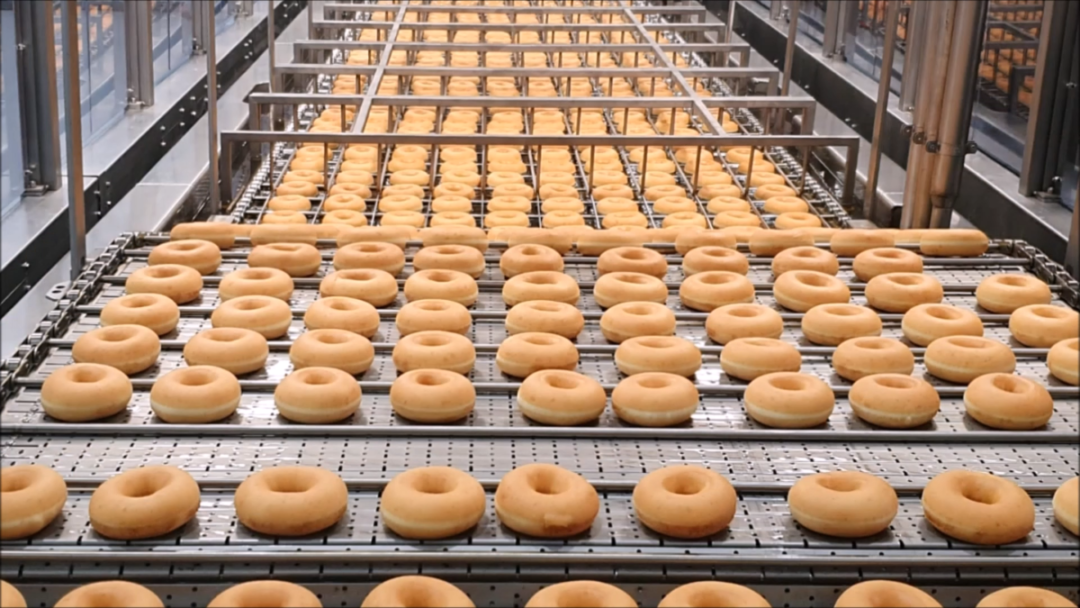Is there anything more sublime than a perfectly fried donut? The crispy, golden brown crust, the open, pillowy soft interior all wrapped up in a delicious glaze or topped with a smear of gooey chocolate icing. Conversely, there’s nothing worse than a donut weighed down with a soggy, greasy texture: an opportunity missed.
Producers of donuts, chips, fried pies and other fried treats understand that keeping their oils clean and fryers running optimally will produce consistent top-quality products. And preserving oil quality helps with sustainability goals, is good for the product and saves money.
Keeping oil clean is challenging when frying a variety of products, particularly items like yeast-raised donuts and apple fritters, in which flour and other particulates break loose in the oil.
“The integration of continuous oil filtration is the most important thing you can do,” said David Moline, vice president of sales and marketing, Moline Machinery. “As the years have gone by, they’ve really advanced in their technology, and we’re able to filter down to the half micron and one micron level, which is truly a polishing filter. The oil quality is able to be maintained often weeks at a time without any interruption in production.”
Bakery and snack manufacturers that use fryers have a variety of options to filter their oil.
“Any debris left in the fryer can quickly burn and carbonize, which in turn contributes to oil degradation,” said Arnaud Jansse, applications engineer, product development, TNA solutions. “In addition to damaging the quality of the oil, this can also disrupt cooking efficiency, making fryers harder to clean and ultimately compromising product quality in terms of taste, appearance and shelf life. Degraded oil used for frying can also lead to serious health-related side effects due to increased levels of fatty acids, oxidized lipids and acrylamides in the end product.”
Producers can employ continuous filtering or filter cooking oil at the end of day or end of week, said Damian Morabito, chief executive officer of Topos Mondial Corp.
“If you do it every day, it stays much cleaner and lasts longer,” he said. “When your oil’s clean and rich and not broken down, it imparts much better flavor. When your oil’s dirty and broken down, food gets more oil-saturated and you get a buildup of fatty acids.”
Before the automated filtration systems were in place, keeping frying kettles clean was a messy, labor-intensive job.
“Prior to the days of the sediment removal and oil filtering systems, customers would be forced to clean out up to two times a week and dedicate at least two shifts a week to sanitation, drain the oil from the fryer and clean it, get all the stuff out of there, which isn’t the most fun job in the world,” Mr. Moline said. “With the sediment removal and oil filter, the bottom of the fryer stays clean, and customers can add up to a couple of shifts of production a week sometimes, if not more.”
The type of filter that should be used and filtration frequency depends on the product as different frying processes dictate different filtering requirements.
“Each application should be evaluated to ensure the correct passive and/or active filtration is applied for the most positive effect,” said James Padilla, director of product development, processing, Heat and Control. “It is also critical that the equipment has a method, mechanical — sediment removal conveyor — or oil flow that ensures the fines or other contaminants enter the filter. In many cases, we see a filter being added to a system with no means for the fines to reach the outlet of the fryer that feeds the filter, thereby negating the purpose and the benefit of the filter.”
While some products require filtering on both the surface and bottom of the kettle, others only require filtering on the bottom.
“Some products release more particles than others, therefore requiring the implementation of more intense filtering cycles,” said Nicola Menardo, president of TP Food Group — North America Inc.
Using a system that provides more than one type of filter can help avoid clogging papers that eliminate small fines.
“We have dual large capacity cannisters with washable baskets,” Mr. Morabito said. “So we catch all the big, heavy stuff. When you’re making donut holes, fritters or cinnamon rolls, a lot of sediment gets sucked down to the bottom. You don’t want to fill your papers up with the sediment. You want to catch that sediment first and then go through the finer filter papers. We have these large dual capacity cannisters ahead of the filter paper. At the end of a fryer drain process, the system can be set in a recirculating mode to further pump oil through the fine filter papers which will then super-clean the oil more thoroughly.”
Mr. Moline said that producers of fried donuts or other foods may need to be strategic about their schedules. For instance, if they’re frying flavored products, like blueberry donuts, they may want to fry those last.
“You may find that if you’re running a flavored product, you want to make sure you’re filtering your oil completely,” he said. “It may be something customers find they want to do just to be 100% certain they’re not going to have any crossover flavors from other products.”
This article is an excerpt from the August 2023 issue of Baking & Snack. To read the entire feature on Frying, click here.






